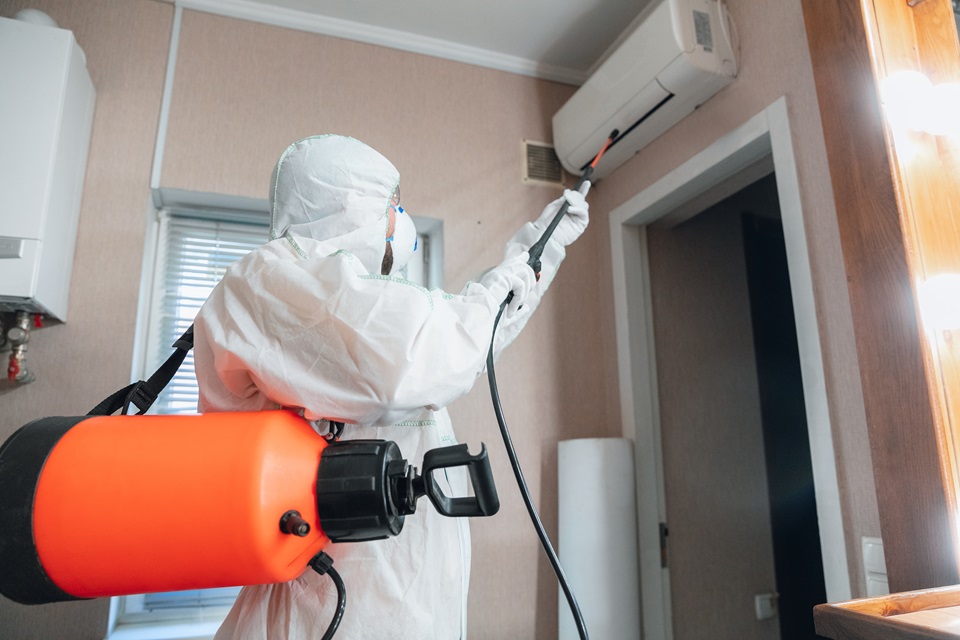Key Takeaways:
- Identifying and tactfully addressing various common household pests.
- Recognizing early signs of pest infestations before they escalate.
- Implementing effective preventative and remedial pest control measures.
- Utilizing professional pest control services when necessary.
- Expectations for the future of pest control and how innovations will play a role.
Introduction To Common Household Pests
Our homes are often seen as sanctuaries, safe from the external chaos of the world. Yet, these sanctuaries can be breached by various common pests, each seeking refuge, sustenance, or both. These invaders range from the seemingly innocuous, like fruit flies and silverfish, to the more insidious, such as termites and bed bugs. Implementing robust pest management strategies is essential to maintaining the sanctity of our households.
Many household pests are drawn indoors by the allure of readily available food and water sources and shelter from outdoor elements and predators. Once inside, they tend to hide in the nooks and crannies of our living spaces, making their detection observationally elusive. The key to curbing the presence of these unwelcome guests lies in recognizing their common entry points and habits and then deploying counteractive strategies that either deter their entrance or make the environment uninviting for their habitation.
Signs Of Pest Infestation
Service providers, like those found through Pest Control in Ocala, offer nuanced and carefully executed plans for keeping homes pest-free. It is through understanding the eclectic palettes of these pests that homeowners are equipped to put in place preventative solid measures.
Homing in on the early indicators of pest presence can avert the unfettered growth of an infestation. These signs are often subtle and can be easily overlooked without vigilance. Droppings, gnaw marks, and damaged packaging can all betoken the presence of rodents or insects. A single biscuit box chewed through in the pantry may be the first visible clue that sparks the need for household intervention. Similarly, finding shed insect skins or spotting live pests can signal that it is time to take action. The manifold dangers these pests pose include the potential for property damage and the real threat of disease transmission. Fast identification followed by immediate response is the twin approach for maintaining a pest-free environment, which ultimately ensures the well-being of the household’s inhabitants.
Preventative Measures To Protect Your Home
While it is crucial to repel pests once they have infiltrated, it is equally, if not more important, to inhibit their entry from the outset. Preventative tactics form the cornerstone of a sound pest management strategy. Regular home inspections for cracks, holes, and crevices are integral to this defense. A proactive attitude toward household cleanliness, such as sanitizing surfaces and securing food in airtight containers, helps to deprive pests of their sustenance within your living space. Outdoor considerations, including the appropriate disposal of waste and managing compost with care, further diminish the likelihood of attracting pests into the home environment.
Yard and garden care should also be considered. Overgrown vegetation provides a prime habitat for invaders like ticks and mice, who might seek passage into the more accommodating and consistent climate found within a home. Keeping vegetation trimmed back and removing any stagnant water that can serve as a breeding ground for insects like mosquitoes are straightforward yet effective methods to minimize the threat of pest intrusion.
Natural Solutions For Pest Control
Natural pest control solutions can be a remarkable alternative to chemical methods for those intent on limiting their ecological footprint. Ingredients such as vinegar, boric acid, and essential oils such as peppermint and eucalyptus can deter many insects without introducing toxic substances into the home. Employing natural predators like ladybugs for aphid control or creating barriers with items such as copper tape for slug prevention are resourceful means of pest management that work in harmony with nature’s balance. Despite the appeal of such methods, it’s essential to acknowledge that natural does not always mean harmless, and sensitivity or allergy to certain botanicals should be considered when opting for plant-based solutions.
Chemical Pest Control: What You Need To Know
When natural remedies do not suffice, chemical products may be necessary to tackle an infestation effectively. Insecticides, rodents, sprays, and foggers have been developed to address specific pest problems. However, these substances are potent and require careful application. It’s critical to thoroughly understand the product labels and adhere to safety guidelines, such as wearing protective gear and avoiding use in areas frequented by children and pets. Knowledge about the targeted pests and the correct usage of chemicals ensures successful mitigation efforts while mitigating potential health risks.
Professional Pest Control Services
There are occasions when, despite all efforts, the scale or nature of an infestation demands expert intervention. Pest control professionals offer specialized knowledge and an arsenal of methods to safely, efficiently, and swiftly address even the most challenging scenarios. These experts are trained not only in the eradication of the present pest population but also in preventing future incursions. By consulting professional services, one can benefit from custom-tailored solutions that consider the home’s unique aspects and the specific behaviors of the pests involved. This comprehensive approach to pest management translates into lasting results and the reassurance that all safety concerns have been adeptly managed. Reflecting upon the benefits of engaging in a professional pest control service underscores the value such experts bring to preserving the hygiene and integrity of one’s household.
Impact Of Pests On Health & Home
Underestimating the implications of a pest infestation can be a grave misstep, as these small, seemingly insignificant creatures can engender enormous, impactful consequences. Numerous pests act as disease vectors, carrying pathogens that can induce illnesses ranging from food poisoning to more severe afflictions like Lyme disease. Active measures to prevent these creatures from becoming household regulars are thus not merely a matter of inconvenience; they are a critical component in maintaining public health and domestic well-being. From an economic perspective, the cost of remediating the structural havoc wreaked by pests can be considerable. Wood-loving insects such as termites or carpenter ants can silently compromise the structural stability of buildings, urging the necessity for ongoing vigilance against their activity.
Pest Control Myths Debunked
Pest control is rife with myths and misapprehensions that can hinder proper pest management. A common misconception is that cleanliness alone will prevent pest infestation—a belief that neglects the many factors influencing pest behavior. For example, bed bugs are indifferent to sanitation levels and are equally likely to be found in immaculate environments as in untidy ones. Another persistent myth is the effectiveness of ultrasonic pest repellers despite a lack of concrete evidence substantiating their efficacy. Converting these myths and focusing on proven methods, homeowners can ensure a more robust defense against pests.
The Role Of Climate Change In Pest Behavior
Climate change casts a long shadow over various aspects of life, influencing the proliferation and distribution of pests in ways that pose new challenges for control methods. Species once confined to some geographical regions are now expanding their habitats due to changing weather patterns and temperatures. These shifts can lead to novel interactions between pests and their environments, catalyzing the need for innovative management techniques. Homeowners and pest control providers alike must thus remain abreast of these changes, adjusting their strategies to the ever-evolving situation. Understanding the implications of a warming planet on pest populations is greatly aided by resources such as ScienceDaily Invasive Species News, which collates cutting-edge research on the subject.
Future Of Pest Control: Innovations & Trends
The landscape of pest control is constantly in flux, driven by technological enhancements and shifts in societal norms. Biopesticides, which exert minimal environmental impact, and genetic pest management, which harnesses biology to control pest populations, are setting new standards in the industry. Furthermore, integrating IoT-enabled devices within pest management indicates a future where routine inspections and interventions can be predictive and automated. These emerging solutions promise greater efficiency, increased safety, and precision in targeting pests, departing from traditional, more generic treatment methods. As we look forward, staying informed through platforms such as the National Pest Management Association News enables homeowners and professionals to align with the direction in which the field of pest control is headed.








No Comments